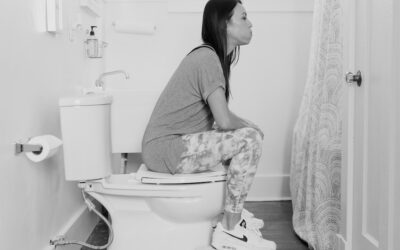“I did not know there was physical therapy for THAT!”
This is one of the most common responses I get when I tell people what I do. I am a Pelvic Floor Physical Therapist who treats muscles, tissues and nerves in the body. These play an important role in peeing, pooping, supporting your organs, having sex and birthing a baby.
Just like any muscle in the body, these muscles need attention and physical therapy in order to work optimally.
Some issues that could be treated with pelvic PT include:
- Urinary or fecal incontinence or urgency or frequency
- Constipation
- Pelvic pain and/or pain with sex
- Prolapse
- Difficulty emptying bladder
- Childbirth prep and/or vaginal or cesarean postpartum recovery
If you experience issues with the pelvic floor, it may be intimidating to discuss even with your most trusted healthcare providers. However, a number of these symptoms are common, and seeking Pelvic Floor PT can help to give you treatment to rectify your concerns!
Below are some details on what pelvic floor physical therapy entails; I hope it will give you the more confidence to seek the treatment you may need.
Information Gathering
The first session is a lot of information gathering. We want to get to know you, not just your symptoms, so we have an hour-long session in a private treatment room.
We discuss concerns you may have, and ask questions about peeing, pooping, sexual health, gynecological health, pain experiences, day-to-day activities, and your exercise routine.
This will help to inform our assessment, pinpoint your goals, and highlight what is most important for you during physical therapy!
An External Assessment
After getting the details, the therapist will perform an assessment, which typically includes the following:
- Looking at your posture and checking pelvic alignment
- Assessing body mechanics – especially if you have little ones or are lifting weights at gym
- Checking your abdominal wall for tenderness/trigger points
- Assessing for diastasis recti/abdominal separation and cesarean scar
- Assessing breathing and pressure management
- Assessing external hip muscles (buttocks, inner thighs) and abdominal, low back and hip strength coordination and endurance
- Observing and assessing the pelvic floor muscles externally
An Internal Assessment (with your consent)
Next, an internal assessment will be performed with your consent. So yes, we do go through the vagina for this. These assessments are different from a gynecological pelvic exam because there are no stirrups and we do not use a speculum. Instead, while lying comfortably on your back, we insert a gloved, lubricated finger to assess muscle function, tone, and tenderness.
If you have problems in the rear (pooping issues, tailbone pain, rectal pain or are unable to do the assessment vaginally) an internal rectal assessment can be performed as well (of course with your consent).
The assessment does not take long, and we will talk you through our findings along the way!
Internal assessments will ONLY BE performed with your consent. If you would prefer to wait until a future session or not at all, we are totally fine with that.
Education
After the assessment, we focus on education to teach you the tools and exercises you can use immediately at home. We will also determine what our next treatment sessions will look like.
For example, you may need some stretches and pelvic floor muscle downtraining to relax and lengthen the pelvic floor muscles.
Perhaps you need pelvic floor muscle strengthening if you lack the support or optimal strength.
Occasionally patients will need a combination of the two.
We will then schedule follow up appointments to ensure we are progressing appropriately.
We’re Here For You
The first session may seem a little overwhelming with a lot of new information about this important group of muscles that you had never really thought about previously!
Hopefully, we would be able to start treatment after the first session with some at home exercises before your next session so you can start progressing immediately.
Most importantly, our goal is for you to feel heard, comfortable, and respected. This is an intimate part of your body and can impact your ability to live comfortably everyday. These symptoms should not be ignored and seeking a pelvic floor PT session is totally worth it!
Some links may be affiliate links. The products we recommend are products we use or recommend to clients.





